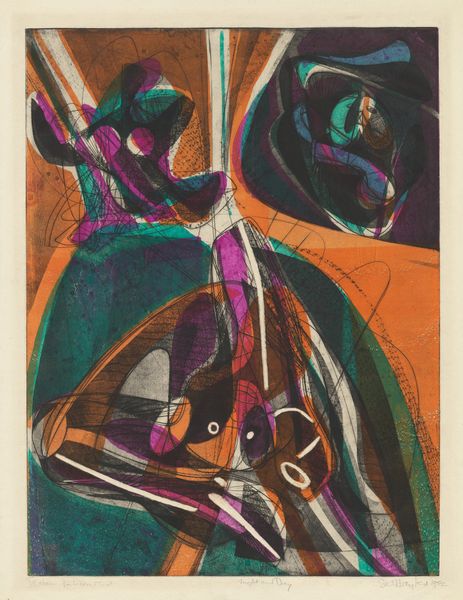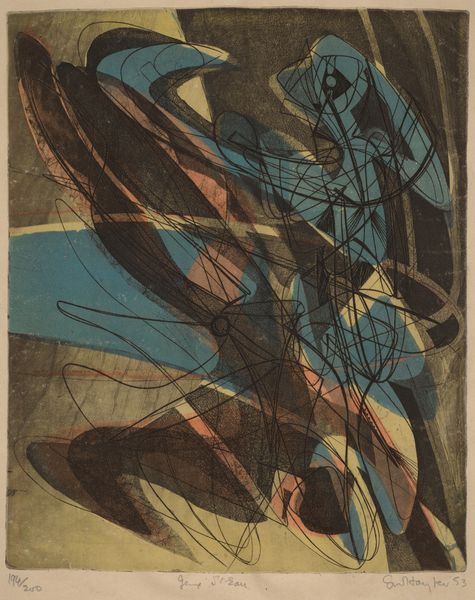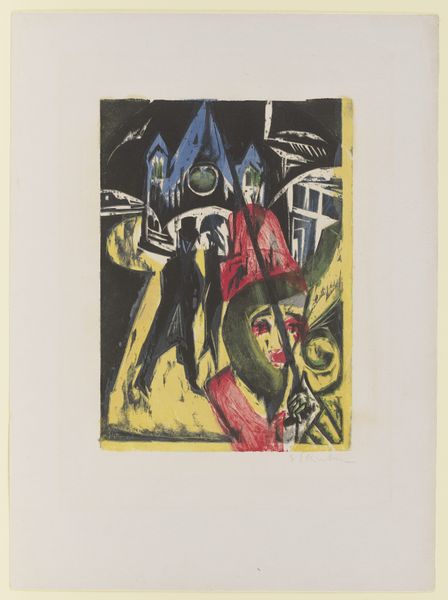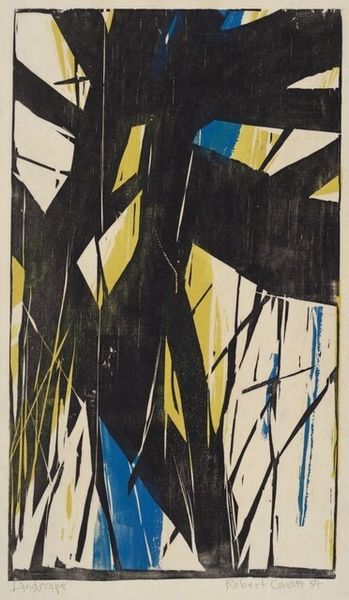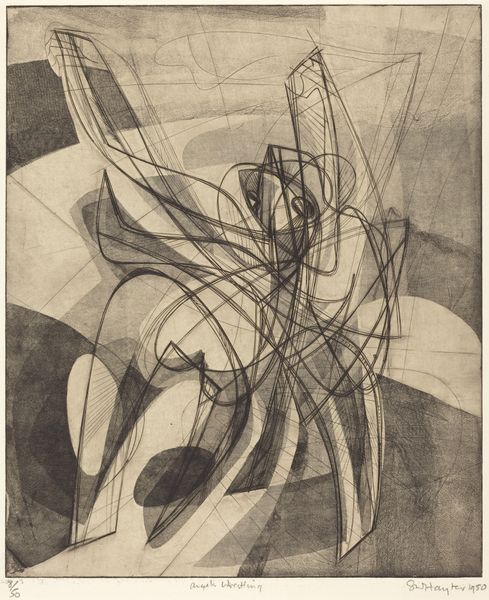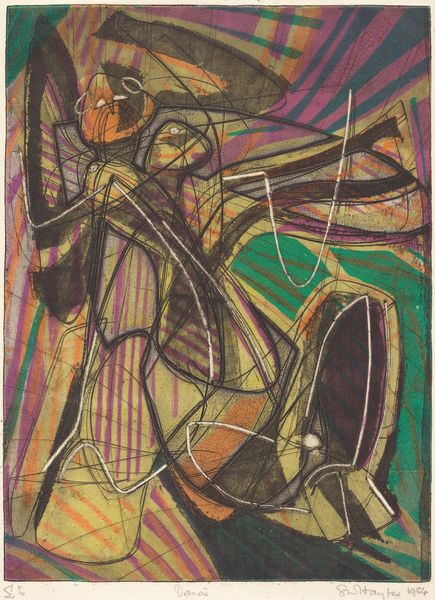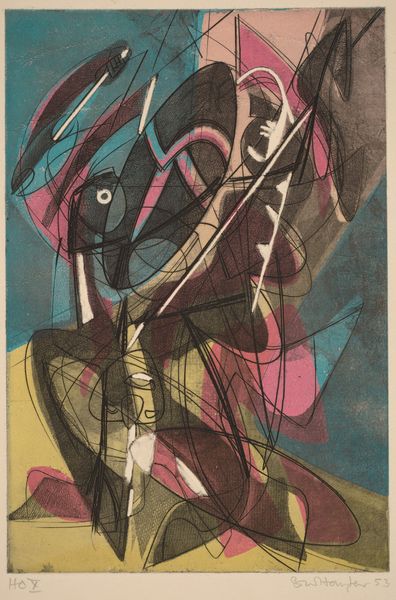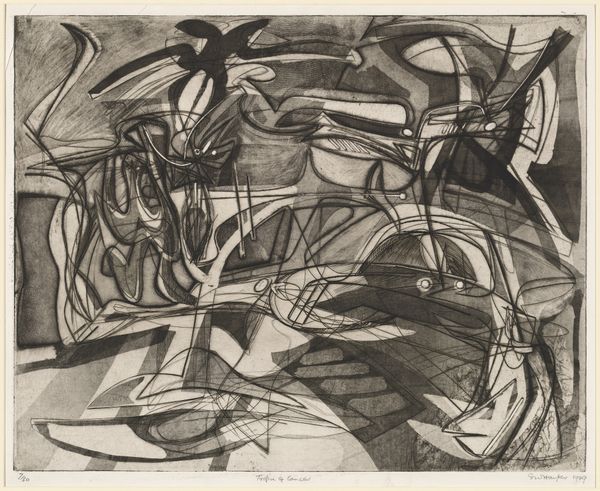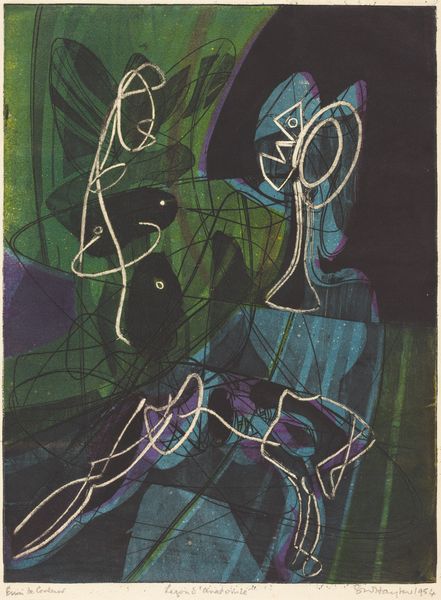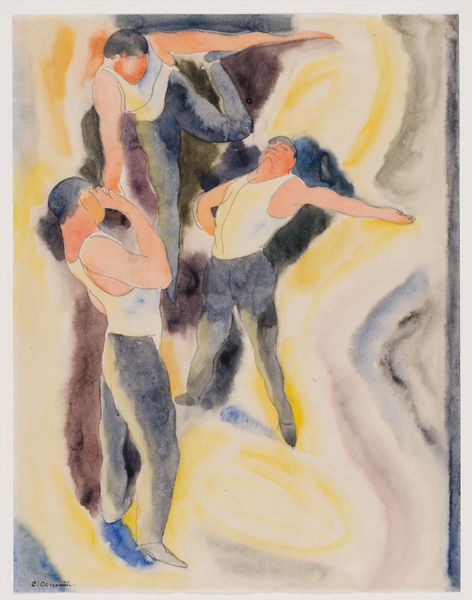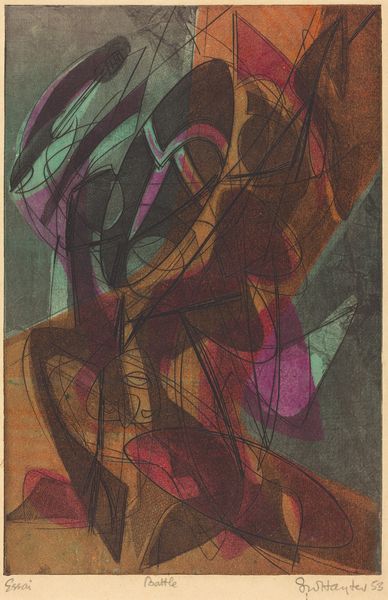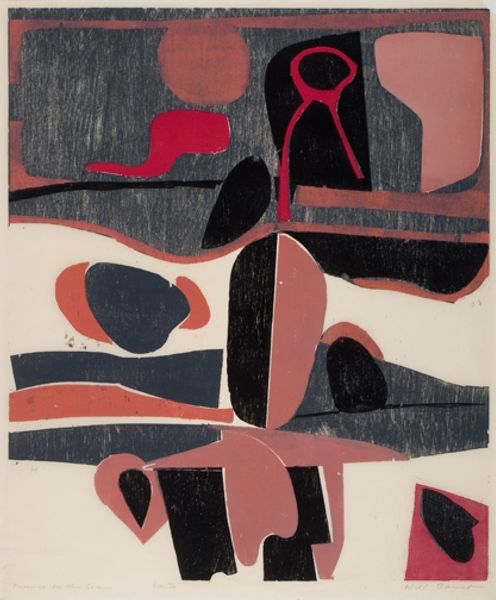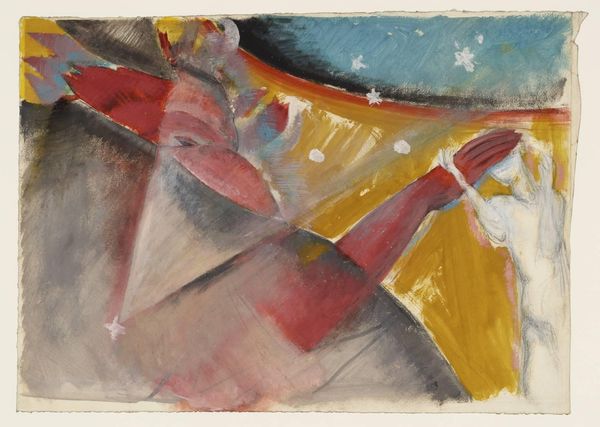
print, etching, intaglio
# print
#
etching
#
intaglio
#
figuration
#
abstract
#
form
#
line
#
surrealism
#
modernism
Dimensions: plate: 45.2 x 37.7 cm (17 13/16 x 14 13/16 in.) sheet: 61.6 x 47.9 cm (24 1/4 x 18 7/8 in.)
Copyright: National Gallery of Art: CC0 1.0
Curator: Well, here we have Stanley William Hayter's "Falling Figure" from 1947. What leaps out at you? Editor: Immediate feeling? Organized chaos. All these crisscrossing lines, bold colors crashing into each other... it feels frenetic, but contained, like a meticulously planned storm. And is that really a figure falling? It looks almost deconstructed. Curator: It does, doesn’t it? Hayter was fascinated by movement, energy—the unseen forces shaping our world. He employed etching and intaglio to achieve this incredible linework, creating almost a sense of dynamism on a static surface. You can see how he's almost dissecting the idea of falling, breaking it down into its component energies. The material act of cutting into the plate allows him to dig into that dynamic force, literally. Editor: Intaglio... right, where you incise the image into the surface. You know, thinking about that process, and how physical it is, makes me consider the labor involved here. I see not just a falling figure, but the marks of the artist's hand, each line a deliberate act, a tiny choreography. Also how those geometric patterns almost feel industrial. He's embedding post-war anxieties. Curator: Exactly. And Hayter surrounded himself with a dynamic group of artists in his Atelier 17—many surrealists and abstract expressionists fleeing Europe during the war. You can feel that creative collision in this piece; that searching for a new language to describe a world turned upside down. A 'Falling Figure' can become representative of both individual, physical collapse, but also a reflection on the crumbling social structures. It's rather hopeful and pessimistic. Editor: Interesting. I initially perceived that organized chaos and that post-war sentiment more heavily. Yet now that I consider this from Atelier 17, it takes on a whole new aspect: one of new and diverse artistic collaboration under unusual circumstance. The artist makes labor of this chaotic collapse to ultimately offer structure to their work. Curator: Well, there you have it. Each mark holding within itself so much; movement, collaboration, industry, history. What is your concluding sentiment? Editor: That perhaps what looks like freefall is actually the potential for flight. Curator: Yes, or a beautiful kind of disintegration—a release of energy into the world.
Comments
No comments
Be the first to comment and join the conversation on the ultimate creative platform.

